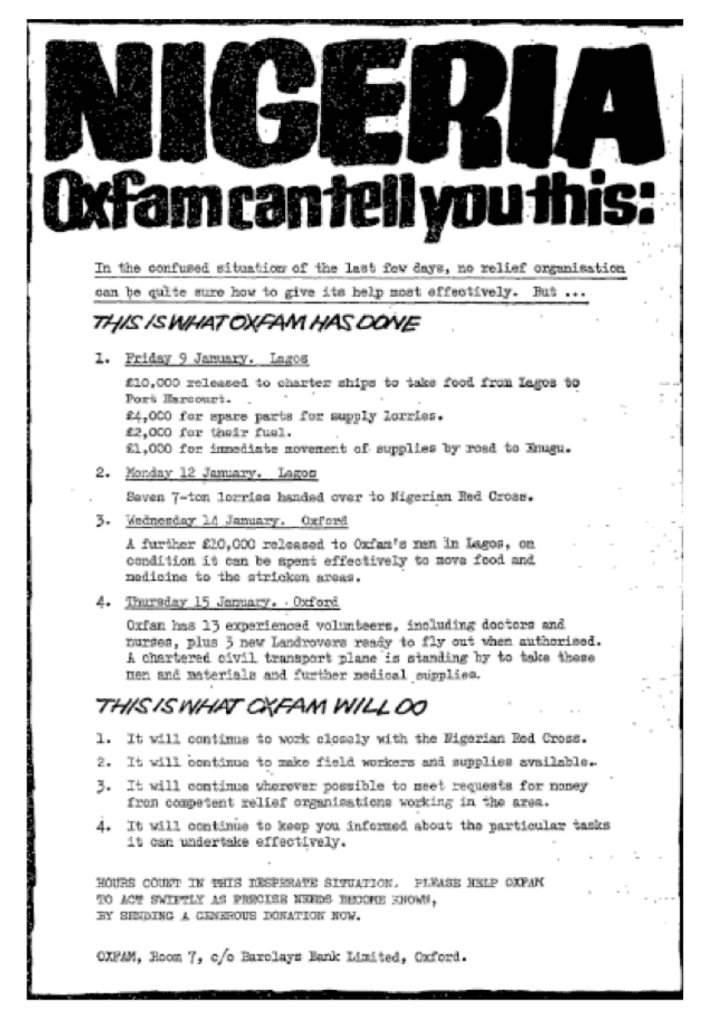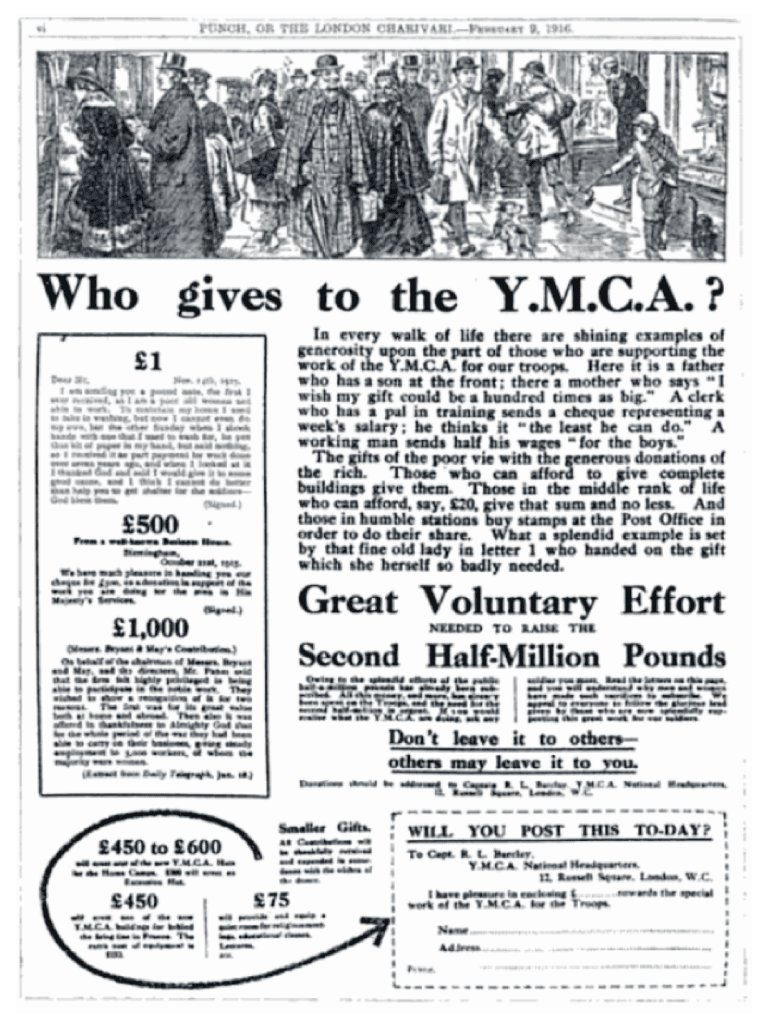Crisis fundraising: What you can learn from the past to shape your response to the Coronavirus emergency.
Everything is different.
And that means that many carefully formulated strategies and mailing plans need to be reviewed and rebuilt to take into account the impact of the Coronavirus crisis.
It's a tough position to be in. But we are not alone. Fundraisers have lived and worked through crises and emergencies before. Throughout history, fundraisers have inspired and motivated people to come together to overcome terrible problems. Fundraisers have generated the gifts that have enabled essential work to go ahead and for the vulnerable to be protected. And we can learn from them.
I keep an online archive that I use to inspire myself when confronted with difficult problems. Its packed full of fundraising advertisements, most from the 20th century, but some go back even further. It's here if you'd like to take a look. You'll find ads from some of the world's most successful charities. It includes ads from The Red Cross, Save the Children, Oxfam, The YMCA, The RNLI and many others.
It will show you the approaches they used during times of war or emergencies. I've pulled three ads out to give you an idea of what we can learn from our long-departed colleagues. Hopefully, they will help you with some of the fundraising problems that you are facing today.
Oxfam. Nigerian Civil War. 1967 - 1970

The Nigerian civil war was the first international crisis that I can remember. The images of starving people that I saw on TV have stayed with me ever since. It may well be the reason why I became a fundraiser.
This ad produced by Oxfam is one of my favourite fundraising communications ever. The artwork has been produced with a felt tip pen (a Sharpie) and the font (Courier) is from typewriter. It looks cheap and urgent. That is exactly what you are looking for.
Oxfam doesn't pretend to know what is going on. At a time of war, everything is in chaos. The ad reflects this. There is no shame or embarrassment. They recognise that people are in need and they are getting help to them as quickly as they can. By whatever means possible.
That includes collaborating with the Nigerian Red Cross. This isn't about brand. This is about helping people in need. They say they will share resources with other charities working in the area if that is an effective way to get help to those in need.
They promise to tell you how they are working and (by default) how they are using their donors' money.
Everything about this ad shows that Oxfam is determined to help people in need. It reflects the reality of the world they were working in.
YMCA . First World War. 1914 -1918

What is most startling about this ad is the large sums they are asking for. £1 in 1916 would be worth £88 (US$103) in today's prices. Read the body copy and you'll see the line, "Those in the middle rank of life who can afford, say £20, give that sum and no less."
That's the equivalent of asking for £1,760 today. And let's place that into context – a skilled manual worker earned £2 a week in 1916 and the Chief Inspector of Railways took home £23 a week. The appeal copy is presenting giving to charity as a social norm.
And look at the size of the other price points. They are further placed into context by demonstrating that the YMCA has already raised half a million pounds (£44m / US$53m).
The appeal includes comments from donors - all are happy to be giving and wish they could do more. This further supports the position that giving is the norm - everyone else is giving. Why aren't you?
But remember, this appeal was produced in the middle of the First World War. Sacrifice was normal - not just money - but also of lives. The readers knew what was at stake. They didn't need it spelling out to them. This was about engaging people in a movement aimed at supporting the troops.
RNLI. Build up to the Second World War. 1937/38

The RNLI ran a series of great ads in the lead up to the Second World War focusing on the fact that that lifeboat crews would risk their lives for you, should you need them. With increasing international tensions as a second global conflict drew nearer, memories of the loss of shipping during the First World War - just 20 years earlier – would not have been a distant memory.
Rather than focus on beneficiaries, these ads features the people who are actually doing the work – just as the RNLI and Marie Curie do today.
They act as a reminder that we have a safety net only because of the hard work and sacrifice of others. At times of crisis, this thought moves to the front of mind. We don't just give to help others, we also give because we are grateful that others are there for us.
And as, with the YMCA ad, albeit a little more subtly, this ad is prompting you to give more than pennies to the appeal.
Three takeaways
When developing your fundraising in response to the Coronavirus crisis there are three key points to remember.
- If you don't know what exactly your plans are or how you will respond to the impact of the crisis, it does not matter. We aren't much more than a week in yet. The situation will certainly change over the coming days, weeks and months. You must get out the message that your beneficiaries – the constituency that your donors care about – are your priority. You will respond to them according to their needs as best you can.
- At times of crisis, you will need more money, so you should ask for it. The vulnerable are going to be especially at risk. The old, those with underlying health issues, those without a secure and safe home are all in a difficult position. The fact that large scale fundraising events and collections are being cancelled further exacerbates the need you have. Respect that some people won't be able to give, but don't let that you stop asking for help from those who can help - and who want to help.
- Your staff and your volunteers are going to be on the frontline of the crisis. They can't self-isolate. They need to be out there, delivering the help and support that's needed. Donors know that and will be grateful for what they are doing. By giving they can be part of your team - helping to make a grim situation better. So feature your staff and volunteers in your appeals. More than you have before. Show what they are sacrificing and what they need to do their job better. It doesn't have to be the purchase of specialist equipment. At the moment, few of us would refuse to buy a bag of shopping for the people putting themselves in harm's way. Your donors feel the same.
Continue to focus on the needs of your donors and they will respond. That means that you must place your fundraising within the context of the Coronavirus crisis. Charities are part of the glue that is keeping communities together. Many people feel helpless in the face of what lies ahead. Giving empowers donors and allows them to feel part of the solution. That is the key element of value that you should be building into your fundraising plans now.
Stay safe and best of luck.
Tags In
Related Posts
2 Comments
Comments are closed.
The Essentials

Crack the Code to Regular Giving: Insights, Strategies, and a Special Giveaway!

‘Tis Halloween. Keep to the light and beware the Four Fundraisers of the Apocalypse!

Why do people give? The Donor Participation Project with Louis Diez.

A guide to fundraising on the back of a postcard

What does the latest research tell us about the state of fundraising?







[…] an interesting article on crisis fundraising through the lens of historical events by Mark Phillips from UK fudnraising agency […]
[…] examples of generosity showing resilience are numerous, but sometimes people may not link them to our current reality, saying that was from a time long […]